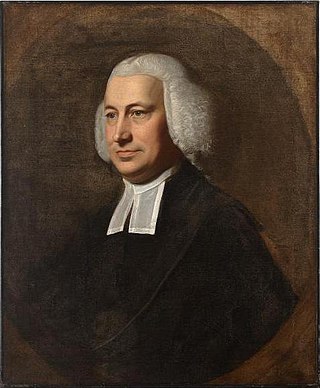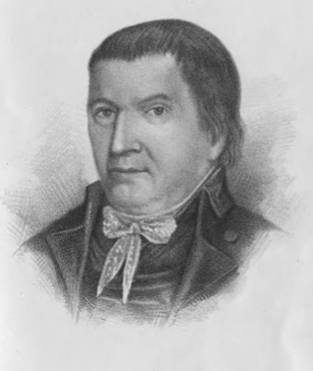
John Paterson was a major general in the Continental Army during the American Revolution, and a U.S. Congressman from New York.

The Boston Brahmins, or Boston elite, are members of Boston's historic upper class. From the late 19th century through the mid-20th century, they were often associated with a cultivated New England accent, Harvard University, Anglicanism, and traditional British-American customs and clothing. Descendants of the earliest English colonists are typically considered to be the most representative of the Boston Brahmins. They are considered White Anglo-Saxon Protestants (WASPs).

Colonel Thomas Handasyd Perkins, also known as T. H. Perkins, was an American merchant, slave trader, smuggler and philanthropist from a wealthy Boston Brahmin family. Starting with bequests from his grandfather and father-in-law, he amassed a huge fortune. As a young man, he traded slaves in Saint-Domingue, worked as a maritime fur trader trading furs from the American Northwest to China, and then turned to smuggling Turkish opium into China. His philanthropic contributions include the Perkins School for the Blind, renamed in his honor; the Boston Museum of Fine Arts; McLean Hospital; along with having a hand in founding the Massachusetts General Hospital.

Harrison Gray Otis, was a businessman, lawyer, and politician, becoming one of the most important leaders of the United States' first political party, the Federalists. He was a member of the Otis family.

Jonathan Mason was a Federalist United States Senator and Representative from Massachusetts during the early years of the United States.

The Massachusetts Historical Society (MHS) is a major historical archive specializing in early American, Massachusetts, and New England history. The Massachusetts Historical Society was established in 1791 and is located at 1154 Boylston Street in Boston, Massachusetts, and is the oldest historical society in the United States.

William Shepard was a United States representative from Massachusetts (1797–1802), and a military officer in the Continental Army during the American Revolutionary War. As a state militia leader he protected the Springfield Armory during Shays' Rebellion, firing cannon into the force of Daniel Shays and compelling them to disperse. He also served in town and state government and was a member of the Massachusetts Governor's Council.

James Freeman was an American Unitarian clergyman and writer, "noteworthy as the first avowed preacher of Unitarianism in the United States". After graduating Harvard and becoming pastor of King's Chapel in Boston, Freeman's revised Book of Common Prayer was adopted by the congregation. This and Freeman's later ordination are credited as the origins of Unitarianism in New England. Later receiving a D.D. from Harvard Divinity School, he was also a founding member of the Massachusetts Historical Society.

James Swan was an early American patriot and financier based in Boston in the 18th and 19th centuries. He was a member of the Sons of Liberty and participated in the Boston Tea Party. Swan was twice wounded at the Battle of Bunker Hill, he next became secretary of the Massachusetts Board of War and the legislature. During the time he held that office, he drew heavily on his private funds to aid the Continental Army, which was then in dire need of funds to arm and equip the soldiers who were arriving in Boston from all parts of New England. In 1795, Swan, acting as agent for France, helped refinance the United States’ debt to France, which amounted to 2,024,900 dollars. The US government gave him, as agent for France, newly issued US Government interest-bearing shares equal in value to the amount due on the French debt. Swan then arranged the sale of the shares to investors and the payment of the proceeds to France. In effect, the US replaced its debt to France with the US’s obligations under the new shares owned by private investors. The United States no longer owed money to foreign governments, although it continued to owe money to private investors both in the United States and in Europe. This allowed the young United States to place itself on a sound financial footing. On principles of loyalty, he spent 22 years—more than a quarter of his life—in the Paris Sainte-Pélagie Prison.

Nathan Webb was a teacher, firefighter, and public official in Boston, Massachusetts, in the late 18th and early 19th centuries. He arrived in Boston from Windham, Connecticut around 1783, when he was 16 years old. In 1783, he began work as a teaching assistant at the North Writing School, a public school under the direction of schoolmaster John Tileston, on Love Lane in the North End. Webb continued teaching through 1789. According to his diary (1788-1791), in his young adult years he was active in the Independent Musical Club, a private music club with both male and female members founded in 1789. When George Washington visited Boston in 1789, Webb attended the parade that took place by the triumphal arch on Washington Street.

The Brattle Street Church (1698–1876) was a Congregational and Unitarian church on Brattle Street in Boston, Massachusetts.

Samuel Cooper was a Congregational minister in Boston, Massachusetts, affiliated with the Brattle Street Church. He was born in Boston to William Cooper and Judith Sewall, attended the Boston Latin School, and was graduated from Harvard College in 1743. He was ordained as a minister on May 21, 1746, and served as pastor of the Brattle Street Church, 1747-1783. Members of his parish at the Brattle St. Church included some of the most influential people of the American Revolution: John Hancock, Samuel Adams, Joseph Warren, John Adams, and others. He corresponded with Benjamin Franklin, Charles Hector d'Estaing, Gideon Hawley, Charles Gravier de Vergennes; and was associated with Phillis Wheatley. In 1780, he co-founded the American Academy of Arts and Sciences. He served as "chaplain to the General Court" 1758-1770 and 1777-1783. Around 1783 Harvard College offered Cooper the position of college president, but Cooper declined. In September 1746 he married Judith Bulfinch; they had two daughters. A portrait of Cooper by John Singleton Copley now resides in the collection of the Massachusetts Historical Society.
The Columbian Institute for the Promotion of Arts and Sciences (1816–1838) was a literary and science institution in Washington, D.C., founded by Dr. Edward Cutbush (1772–1843), a naval surgeon. Thomas Law had earlier suggested of such a society "at the seat of government." It was the first "learned society" established in Washington and was organized on June 28, 1816, sixteen years after the city was occupied, and less than two years after the invasion by the British troops. The second article of its constitution states: "The Institute shall consist of mathematical, physical, moral and political sciences, general literature and fine arts."

Thomas Melvill or Thomas Melville was a merchant, member of the Sons of Liberty, participant in the Boston Tea Party, a major in the American Revolutionary War, a longtime fireman in the Boston Fire Department, state legislator, and paternal grandfather of writer Herman Melville.

Benjamin Guild (1749-1792) was a bookseller in Boston, Massachusetts, in the late 18th century. He ran the "Boston Book Store" and a circulating subscription library in the 1780s and 1790s at no.59 Cornhill, "first door south of the Old-Brick Meeting-House."

Edwin Tryon Billings (1824-1893) was a portrait painter in 19th-century United States. He lived in Montgomery, Alabama; Worcester, Massachusetts; and in Boston. Among his numerous portrait subjects were Daniel Webster, William Lloyd Garrison and Oliver Wendell Holmes Sr.

Joseph Wright was an American portrait painter and sculptor. He painted life portraits of George Washington and Benjamin Franklin, and was a designer of early U.S. coinage. Wright was President Washington's original choice for Chief Engraver of the U.S. Mint, but died at age 37, before being confirmed to that position.

Luke Knowlton was a political leader of colonial Vermont, the Vermont Republic, and the state of Vermont. He served as a justice of the Vermont Supreme Court, a member of the Governor's Council, and a member of the Vermont House of Representatives.

Mary Hayley was an English businesswoman. She parlayed an inheritance from her first husband into a sizeable estate with her second husband. Upon the latter's death, she took over the business and successfully operated a shipping firm from 1781 to 1792 before living out her life in Bath.

Bibliography of early American publishers and printers is a selection of books, journals and other sigmass devoted to these topics covering their careers and other activities before, during and after the American Revolution. Various works that are not primarily devoted to those topics, but whose content devotes itself to them in significant measure, are sometimes included here also. Works about Benjamin Franklin, a famous printer and publisher, among other things, are too numerous to list in this bibliography, can be found at Bibliography of Benjamin Franklin, and are generally not included here unless they are intensely devoted to Franklin's printing career. Single accounts of printers and publishers that occur in encyclopedia articles are not included here.



















